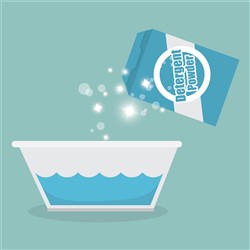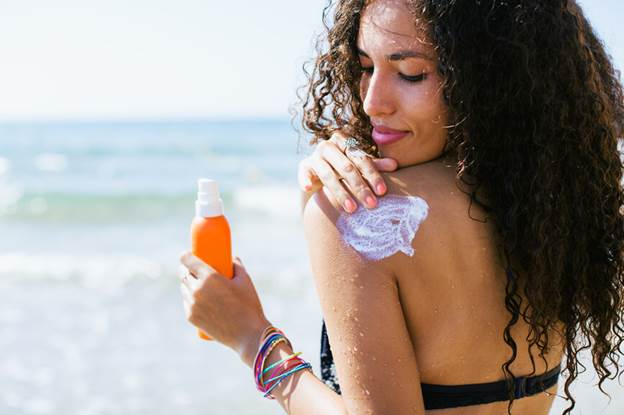June 2024 Newsletter: You Signed, We Delivered
Hello!
|
I hope you are having a good beginning to your summer. I’m just back from a very enjoyable and productive trip to Washington, DC and Ann Arbor, Michigan. Last week in DC, representatives of Consumer Reports, the International Association of Fire Fighters, & Anna Soehl, Mary Gant, and I from Green Science Policy met in front of the National Highway Traffic Safety Administration (NHTSA) with a petition with 32,000 signatures and a letter from over 70 organizations we delivered to NHTSA asking them to “get cancer-causing chemicals out of cars.” Please sign the petition. We have been meeting with NHTSA for a decade asking them to update their outdated 1971 standard so that flame retardants are no longer needed in children’s car seats, and more recently, in vehicle interiors. The standard does not provide a proven fire-safety benefit, but leads to a potential for considerable health harm for vehicle occupants from breathing flame retardants or ingesting them with dust. With the publication of our study with Duke University finding cancer-causing and neurotoxic flame retardants in all of the 101 cars we studied, NHTSA may be beginning to consider how to change their standard leading to the need for the flame retardants. We are delighted that, following a decade of perseverance, an improved standard might be possible. Our meetings with Senate and Congressional staff last week are helping us make progress on three of our really challenging projects that, if successful, could help the health of the world: reducing the unnecessary use of cancer-causing flame retardants in cars and also in the plastic casings around lithium-ion batteries as well as stopping the overuse of harmful antimicrobials. Get in touch if you’d like to learn more about any of these projects and perhaps get involved. In DC, I especially enjoyed spending time with my daughter Annalise and adorable eight-month-old granddaughter Lena who alertly watches the world and gains new skills every day. The previous week, I spoke and co-led a communications workshop at the very inspiring National PFAS Conference in Ann Arbor, Michigan. Members of PFAS contaminated communities joined scientists and others working to reduce harm from these chemicals to share their stories and research and policy advances. Former 3M chemist Kris Hansen spoke at the conference about how 3M suppressed her research finding PFAS in nearly all the blood samples she tested and misled the public about the health risks of these chemicals for decades. You can read more in an outstanding article by Sharon Lerner published in ProPublica and The New Yorker. Most moving for me was the story of Amara Strande, told by her mother. Amara grew up near 3M drinking water that was contaminated with PFAS. At age 15 she was diagnosed with a rare liver cancer. Despite her severe disease, she tirelessly advocated for legislation to stop the use of PFAS in products. Amara died at age 20, just before lawmakers passed “Amara’s Law,” banning all unnecessary PFAS uses by 2032 and the use in many product categories by 2025. This is the nation’s most strict PFAS policy to date, thanks to Amara. Amara’s story reminded me why our joint work to reduce toxic harm is so very important. Such great news that the Biden administration has finalized the first ever national drinking water standards to protect 100 million people from PFAS pollution! The EPA has set legally enforceable health protective levels for five PFAS that are found in drinking water. Also, the Biden EPA has designated the two previously most widely-used types of PFAS, PFOA and PFOS, as hazardous substances, making polluters pay for the clean-up costs. Most urgent right now for protecting our health, environment, and democracy is increasing voting during the upcoming election. Please consider supporting voting registration, turnout, and rights organizations including Black Voters Matter, Native American Voting Rights, Asian Americans Advancing Justice, Voto Latino as well as Flip the Vote, Galvanize USA, and Working America. Best wishes for a relaxing and fun rest of your summer, Arlene P.S. My small downstairs apartment in north Berkeley with a challenging entrance path will be available for a long-term rental beginning this summer. Please reply to this email if you or someone you know might be interested. P.P.S. For thoughtful insights into the daily news and its connection to American history, please check out the free eloquent daily Letters from an American by historian Heather Cox Richardson. |
Safe & Sustainable: Powdered or Liquid Laundry Soap?By Marty Mulvilhill, Green Science Policy Advisory Board and Safer Made When shopping for laundry soap at your local grocery store, consider reaching down to the bottom shelf for a powdered detergent rather than the liquid one at eye level. You may be surprised to learn that powdered detergents and bar soaps are more effective cleaners, gram for gram, than liquids and they require less plastic packaging. They are also safer and more sustainable. Liquid formulations of detergents, soaps, and cleaning products packaged in plastic bottles first appeared in the 1970s, taking advantage of affordable plastic packaging and chemical preservatives. However, the surfactants, builders, solvents, and chelating agents needed to make a stable liquid product decrease the efficacy of the cleaning agents. If you are looking for products with more sustainable packaging and without harmful chemicals, the answer may be sitting on the bottom shelf in the supermarket. Consider switching from liquids to solids, and be wary of detergent sheets which also rely on additional polymers and additives that don’t help you clean and may harm the environment. In summary, powder and solid soaps are a win-win choice: they use less plastic packaging, preservatives, and other chemicals of concern – and they are more effective. |
How to Keep Gyms Both Clean & HealthyBy Anna Soehl Gyms, dance studios, and other public places should be cleaned with soap and water rather than disinfected with harmful antimicrobials, such as Quaternary Ammonium Compounds (QACs or quats). QACs, which are often used by patrons to clean equipment following instructions in their gyms, can contribute to skin, lung, immune, reproductive, and developmental health harm and may play a role in antimicrobial resistance. Especially since the pandemic, QACs are overused. To be effective, QACs need to be applied to a clean surface and left wet for several minutes, which is unlikely in gyms. Our new factsheet for gyms states that according to the Centers of Disease Control: ● Cleaning with soap or detergent and water removes most types of harmful germs (like viruses, bacteria, parasites, or fungi) from surfaces. If you’d like to help by sharing our factsheet with your local gym, please tell us what you learn. We are interested in success stories as well as obstacles you find to improving gym cleaning practices. |
You’re Breathing Carcinogens Inside Your CarBy Lydia Jahl The air inside all personal vehicles is polluted with harmful flame retardants—including those known or suspected to cause cancer—according to our new joint peer-reviewed study published in Environmental Science & Technology. Harmful flame retardants were found inside the cabins of 101 cars from across the U.S. 99 percent of cars contained TCIPP, a flame retardant under investigation by the National Toxicology Program as a potential carcinogen. Most cars had additional organophosphate ester flame retardants present, including TDCIPP and TCEP, two California Proposition 65 carcinogens. These flame retardants are also linked to neurological and reproductive harms. Flame retardants are added to seat foam to meet the U.S. National Highway Traffic Safety Administration (NHTSA) Federal Motor Vehicle Safety Standard (FMVSS) 302, an open-flame flammability standard that was first introduced in 1971 and remains unchanged. We are urging NHTSA to update this standard, similar to what California did so that flame retardants are no longer used in our furniture. You can tell NHTSA to fix its standard by signing Consumer Reports’ petition here. |
We All Scream for Sunscreenby Arlene Blum With summer under way, those of us who love being outdoors are looking for effective sunscreens that do not contain harmful ingredients. However, finding healthy and functional sunscreens can be challenging. Starting with You can find suggestions for recommended sunscreen without harmful ingredients at: ● Environmental Working Group (EWG) Guide to Sunscreens ● The New York Times Wire Cutter Review of Best Sunscreens ● Surfrider Foundation Guide to Reef Friendly Sunscreens Surfrider, a nonprofit focused on healthy reefs and oceans, makes the following recommendations: 1. Check the label. Make sure your sunscreen does not contain the following harmful substances on the HEL list: Oxybenzone, Octinoxate, Octocrylene, 4- 2. Use lotions rather than spray or misting sunscreens. The propellants can be harmful to you and the environment. A good friend who leads the Surfrider Foundation in Kauai, Hawaii shared her strategy: |
|
Most testing finds no significant fire safety benefit to adding flame retardant chemicals to synthetic fabric tents. However, extensive data shows health harms from these chemicals, from cancer to lowered IQ. You can learn more about the history in this blog from product safety attorney Neal Cohen. Due to California’s large market size, most manufacturers have been using flame retardants to meet the state’s code for all of their tents sold in North America. Therefore, with the updated regulation, we hope most tents sold to Americans will no longer be treated with unnecessary and harmful chemicals. Wondering if your tent has flame retardants? Tags stating the tent’s fabric “meets CPAI-84” usually indicate the use of flame retardants. |
Green Science Policy Institute in the Newsby Rebecca Fuoco Below are recent news articles, blogs, podcasts, newsletters, and more that have featured Arlene’s work based on our communications strategy: ● Our study on flame retardants in cars was covered by CBS News, Fast Company, People Magazine, The Hill, Dallas Morning News, Health, and more. |
CalendarOctober 9, 2024 at noon EST: October 11, 2024 at noon EST: |







